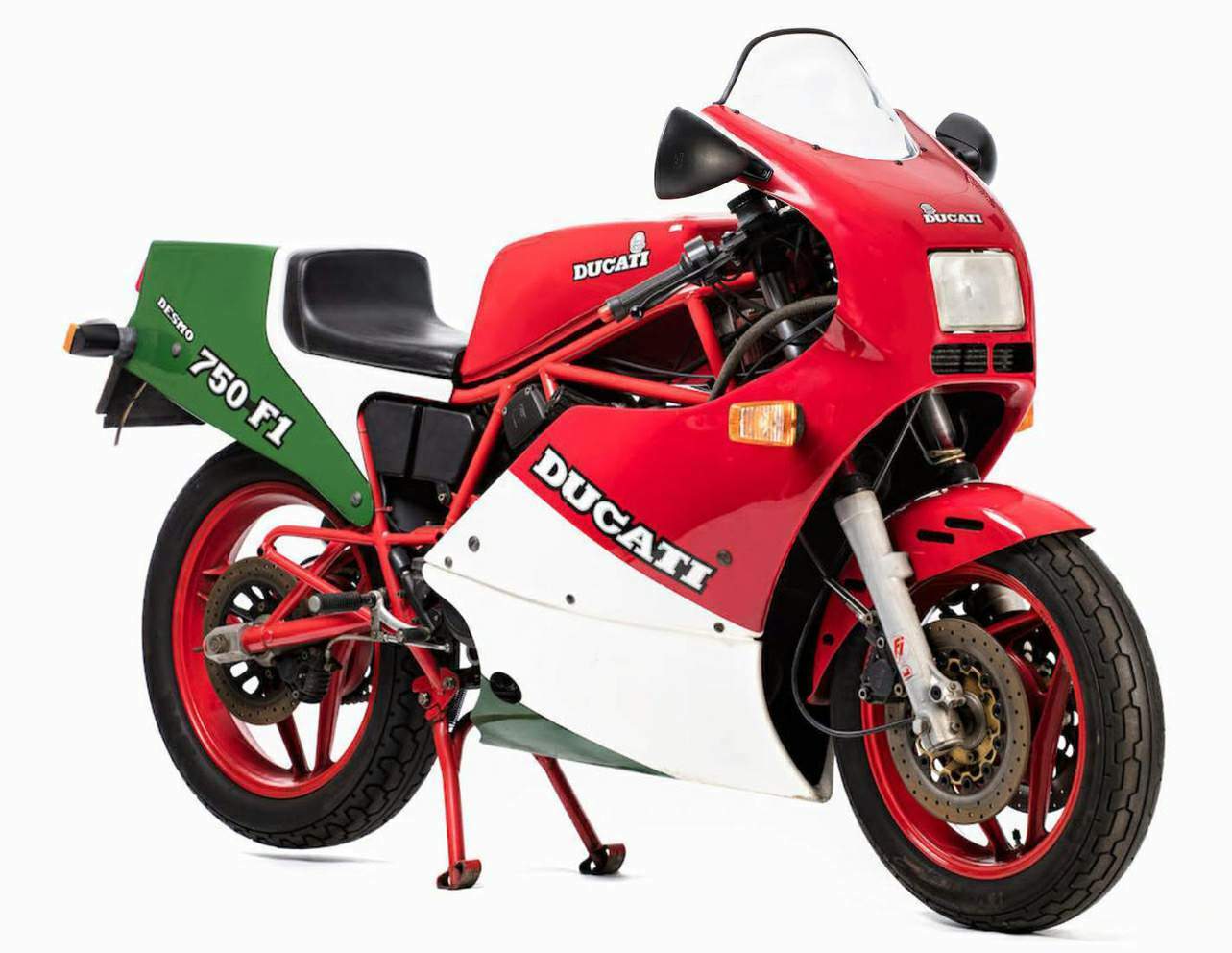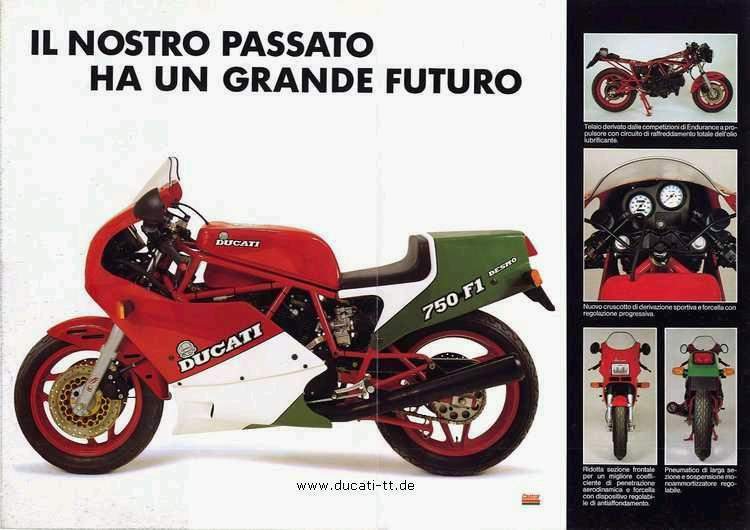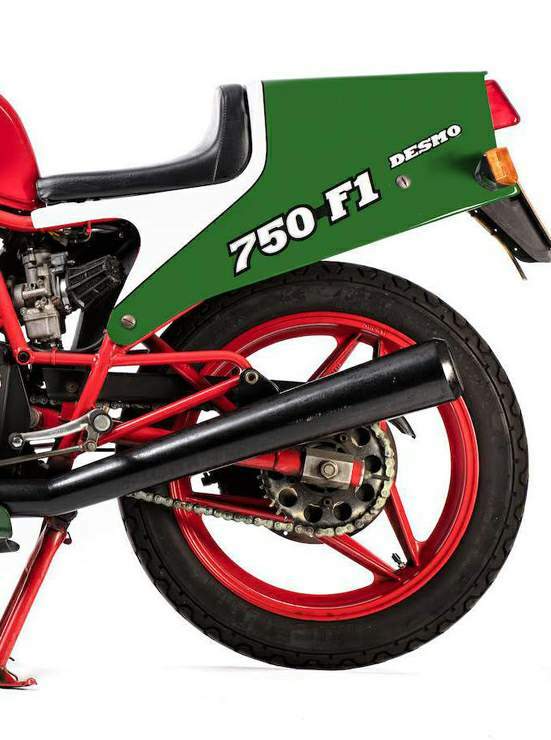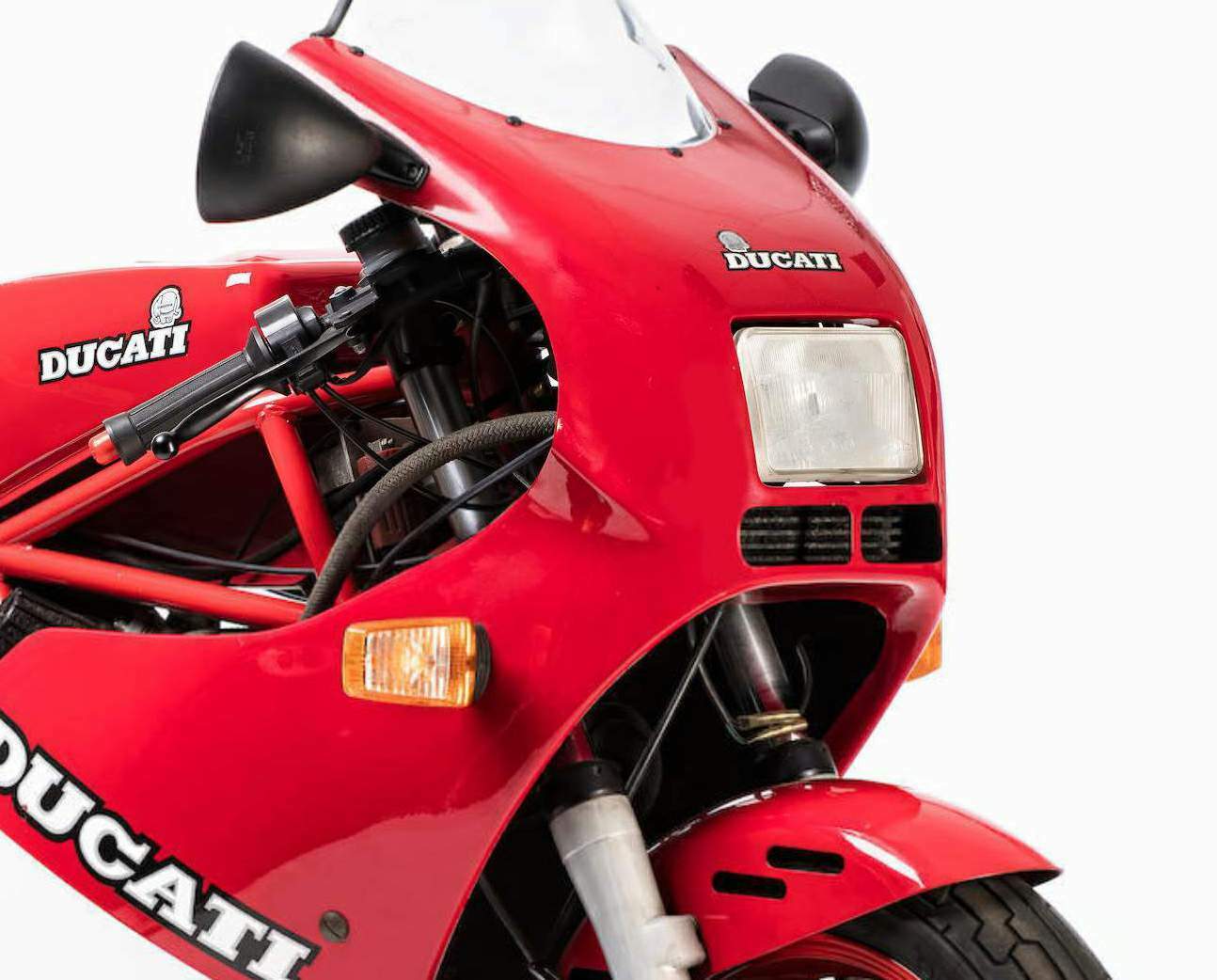
|
|
|
|
|
|
Classic Bikes
Custom Bikes
Individual
Racing Bikes AJP
AJS
Aprilia
Ariel
Avinton / Wakan
Bajaj
Benelli
Beta
Bimota
BMW
Brough Superior
BRP Cam-Am
BSA
Buell / EBR
Bultaco
Cagiva
Campagna
CCM
CF Moto
Combat Motors
Derbi
Deus
Ducati
Excelsior
GASGAS
Ghezzi Brian
Gilera
GIMA
Harley Davidson
Hero
Highland
Honda
Horex
Husaberg
Husqvarna
Hyosung
Indian
Jawa
Kawasaki
KTM
KYMCO
Laverda
Lazareth
Magni
Maico
Mash
Matchless
Mondial
Moto Guzzi
Moto Morini
MV Agusta
MZ / MuZ
NCR
Norton
NSU
Paton
Peugeot
Piaggio
Revival Cycles
Roland Sands
Royal Enfield
Sachs
Sherco
Sunbeam
Suzuki
SWM
SYM
Triumph
TVS
Ural
Velocette
Vespa
Victory
Vincent
VOR
Voxan
Vyrus
Walt Siegl
Walz
Wrenchmonkees
Wunderlich
XTR / Radical
Yamaha
Zero
Video
Technical
Complete Manufacturer List
|
Ducati 750F1 Desmo
|
|
Make Model |
Ducati 750 F1 Desmo |
|
Year |
1986 |
|
Engine |
Four stroke, 90°“L”twin cylinder, SOHC, desmodromic 2 valves per cylinder, belt driven |
|
Capacity |
748 cc / 45.6 cu in |
| Bore x Stroke | 88 x 61.5 mm |
| Compression Ratio | 10.0:1 |
|
Induction |
2 x 36 mm Dell'Orto PHF36 carburetors |
|
Spark Plugs |
Champion RA6YC |
|
Ignition |
Kokusan electronic |
|
Battery |
Yuasa 12V 14Ah |
|
Starting |
Electric |
|
Max Power |
55.2 kW / 75 hp @ 9000 rpm |
|
Max Torque |
70.6 Nm / 7.2 kgf-m / 52.1 ft-lb @ 7000 rpm |
|
Clutch |
Wet, multiplate |
|
Transmission |
5 Speed |
|
Primary Drive Ratio |
1.972:1 (36/71) |
|
Gear Ratios |
1st 2.500 / 2nd 1.714 / 3rd 1.333 / 4th 1.074 / 5th 0.966:1 |
|
Final Drive Ratio |
2.666:1 (15/40) |
|
Final Drive |
Chain |
|
Front Suspension |
40 mm Forcella Italia fork |
|
Rear Suspension |
Round section chrome-moly steel swingarm with adjustable (for preload) cantilever mono-shock, Marzocchi PVS 4 |
|
Front Brakes |
2 x 280mm Discs, single piston caliper. |
|
Rear Brakes |
Single 260 mm disc |
|
Front Tyre |
120/80 V16 |
|
Rear Tyre |
130/80 V18 |
|
Dimensions |
Length: 2110 mm / 83.1 in Width: 690 mm / 27.2 in Height: 1130 mm / 44.5 in |
|
Wheelbase |
1400 mm / 55.1 in |
|
Seat Height |
750 mm / 29.5 in |
|
Dry Weight |
175 kg / 386 lbs |
|
Fuel Capacity |
18 L / 4.8 US gal / 4.0 Imp gal |
|
Top Speed |
200 km/h / 124 mph |
|
Colours |
Red frame, red white and green |
| Manual | Bevelheaven.com |
| Road Test | Bike 1986 750Fi vs GSX-R750 |
The Ducati 750 F1 is remembered by the marque faithful as the last of the original Ducatis, it would be the last superbike developed and built by Ducati before the Cagiva takeover in late-1985.
Controversially, Cagiva had intended to rebadge Ducati motorcycles with their own branding, however this would likely have led to an armed insurrection across the Italian peninsula, ending in public hangings à la Mussolini.
Wisely the Cagiva board of directors elected to keep the Ducati name alive.
The Ducati 750 F1 was first offered to the public in 1985, and was sold until 1988. It was based on the hugely successful Ducati 600 TT2, a race bike that had won the 1981 Formula 2 World Championship, as well as the 1982, 1983, and 1984 Championships.
In ’82 Ducati decided to build the 750cc version of their world-beating 600 TT2 for Formula 1 competition. The 750 F1 was never as successful as its slightly smaller engined stablemate, but its DNA was unparalleled and before long the public were clamoring for a street-legal version they could buy from their local dealership.

When it was released in the mid-80s the 750 F1 was one of the best handling superbikes you could buy, although buying one wasn’t all that easy – just 1,801 were made for global distribution between 1985 and 1986. Special editions came in the form of the 1986 750 F1 Montjuich, then in 1987 the 750 F1 Laguna Seca and 750 F1 Santamonica made an appearance – all of which were named after great Ducati race track successes and offered increased performance over the original F1.
Under its attractive, aerodynamic bodywork the 750 F1 used a tried and tested Ducati formula: an air-cooled L-twin that acts as a stressed member, a trellis frame, twin Dell’Orto carburetors, and a hefty dose of Italian magic. Up front there are twin Brembo discs with a single Brembo in the rear, suspension consists of Marzocchi 38mm non-adjustable forks up front with a Marzocchi monoshock cantilever swingarm in the rear.
Ducati managed to keep the weight of the 750 F1 down to 175 kilograms (386 lbs), this coupled with the power output of 62.5 hp at 7500 rpm gave the bike a top speed of 206 km/h (~130 mph). Not blistering figures for the era but when coupled to the excellent handling and low kerb weight, resulted in the 750 F1 being a remarkably engaging motorcycle to ride.
Surviving examples are now rarely available and often spend decades with each owner, as people are typically reticent to let them go – particularly if they own one that they know is all original and well cared for.
Source silodrome.com



|
Any corrections or more information on these motorcycles will be kindly appreciated. |